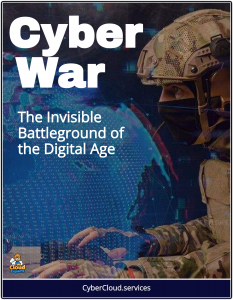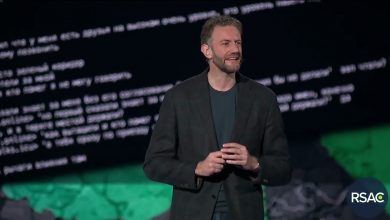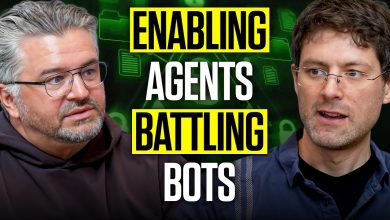The Network: The Cybersecurity Intelligence War You Never See
OPSWAT, a global leader in critical infrastructure protection, isn’t a household name, and that’s by design.
 In the dim glow of a control room, screens flicker with streams of data—lines of code, network traffic, and cryptic alerts.
In the dim glow of a control room, screens flicker with streams of data—lines of code, network traffic, and cryptic alerts.
The air hums with tension, not from the whir of machines, but from the invisible war being waged.
This is the front line of cybersecurity, a battlefield where OPSWAT’s experts stand as sentinels, protecting critical infrastructure, government agencies, and enterprises worldwide from sophisticated attacks most people will never know exist.
It’s a quiet evening in late 2024 when the first anomaly pings on OPSWAT’s radar. A power grid in a mid-sized American city registers unusual traffic—a faint whisper of unauthorized access buried beneath layers of routine operations. To the untrained eye, it’s nothing. To Sarah Chen, a senior threat analyst at OPSWAT, it’s the opening move in a high-stakes chess game.
“We don’t just see attacks; we anticipate them,” Sarah says, her eyes fixed on a dashboard displaying real-time threat intelligence. She’s part of a team that’s spent years studying the shadows of the internet—where nation-state hackers, criminal syndicates, and lone wolves plot to disrupt the systems that keep the world running. Tonight, her instincts tell her this isn’t a random probe. It’s targeted. It’s deliberate.
OPSWAT, a global leader in critical infrastructure protection, isn’t a household name, and that’s by design. Their work thrives in obscurity, safeguarding everything from nuclear power plants to financial networks to military operations. Their weapon? A blend of cutting-edge technology and human ingenuity, honed to detect and neutralize threats before they escalate into chaos.
The Attack Unfolds
The anomaly Sarah spotted isn’t loud or flashy. It’s a subtle infiltration—a single compromised file slipped into the power grid’s update system via a phishing email that an overworked engineer clicked on weeks earlier. That file, a Trojan horse, has been lying dormant, waiting for its moment. Now, it’s phoning home to a server halfway across the globe, sending encrypted packets that hint at something bigger.
Sarah pulls in her team: a mix of malware reverse-engineers, network specialists, and data scientists. They dissect the file using OPSWAT’s MetaDefender platform, a tool that strips apart suspicious code layer by layer, scanning it across dozens of antivirus engines and sandbox environments. Within hours, they confirm it’s a variant of a known ransomware strain, but with a twist—it’s been customized to target industrial control systems (ICS), the beating heart of critical infrastructure.
“This isn’t about locking files for a quick payout,” says Raj Patel, OPSWAT’s lead ICS security expert. “This is about control. Whoever’s behind this wants to hold the grid hostage—or worse, sabotage it.”
The stakes are dizzying. A successful attack could plunge thousands into darkness, disrupt emergency services, and ripple through the economy. The team traces the command-and-control server to a cluster in Eastern Europe, but the trail quickly fragments—bouncing through VPNs and anonymized networks. It’s a hallmark of a sophisticated adversary, possibly state-sponsored.
The Invisible War
This is the cybersecurity intelligence war you never see—a relentless cat-and-mouse game where attackers evolve as fast as defenders. OPSWAT’s experts don’t just react; they predict.
Their threat intelligence database, built from years of analyzing malware, zero-day exploits, and attack patterns, is a living archive of digital warfare. It’s how they knew the ransomware’s ICS focus wasn’t random—it matched tactics seen in prior attacks on European utilities, linked to a shadowy group dubbed “Iron Net” by the cybersecurity community.
But knowing the enemy isn’t enough. Speed is everything. While Sarah’s team neutralizes the Trojan—deploying patches and isolating infected systems—they alert the grid operator and federal authorities. Meanwhile, OPSWAT’s global network kicks into gear, sharing the ransomware’s signature with partners across government agencies and enterprises worldwide. If Iron Net strikes again, the world will be ready.
The attack is thwarted before it can escalate, but there’s no victory parade. By morning, the control room is quiet again, the screens back to their steady hum. The public wakes up none the wiser, flipping on lights powered by a grid that nearly buckled overnight.
The Unsung Guardians
This story repeats itself daily, not just at OPSWAT but across a hidden ecosystem of cybersecurity warriors. From foiling espionage attempts on defense contractors to stopping data breaches at hospitals, their battles shape the modern world in ways most can’t fathom. Yet the war never ends. Each victory is just a pause before the next salvo.
“We’re not here for applause,” Sarah says, sipping coffee as the sun rises. “We’re here because the alternative—failure—isn’t an option.”
For OPSWAT’s experts, the fight is personal. Raj, a former engineer at a water treatment plant, knows what’s at risk if systems fall. Sarah, whose family fled a cyber-crippled region years ago, sees every blocked attack as a small redemption. Together, they embody a truth: in the network, the real heroes are the ones you’ll never see—until the lights go out.
As 2025 unfolds, the threats will grow more cunning, fueled by AI-driven malware and quantum computing breakthroughs. But so will the defenses. OPSWAT’s arsenal—bolstered by innovations like deep content disarm and reconstruction (CDR)—is already adapting, stripping threats bare before they can strike.
The war rages on, silent and unseen. And in control rooms like Sarah’s, the guardians stand watch, ensuring the network holds—for now.



